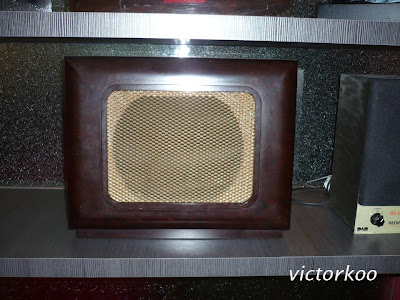
1. What is the address of this building? (Provide the number, road name and postal district.)
2. Which company used to occupy this building?
3. When did the company move into the building?
4. What product did the company manufacture?
5. Name 3 brand names under which the product was marketed as.
Note: To make the quiz more challenging, I have deleted the background as well as the words on the building.
==================================================
Update on 24 Sep 2008 - Answers to Old Singapore Quiz (2)Thanks for all your guesses. Most of you got the answers right. The most complete answers were provided by a reader named Eugene (please see
this post). Well done, Eugene.
First, let's take a look at the original unedited photo:

Another photo taken from a different angle:

Below are photos of the same building from other sources. Here's one from National Archives Singapore (NAS) circa 1986:

Photo from Straits Times article dated 3 Jan 2007:

Here is an NAS image which shows a different building but with the same name. Anyone knows whether this building was located next to the present one? (I think the building has been demolished.)

There is even one of the same name in KL:
_sdn_bhd.jpg)
(Photo taken from
this blog.)
Now for the answers to Old Singapore Quiz (2):
1. What is the address of this building? (Provide the number, road name and postal district.)
Ans: 1177 Serangoon Road, Singapore 328231.2. Which company used to occupy this building?
Ans: National Aerated Water Co. Ltd.3. When did the company move into the building?
Ans: 1950s.4. What product did the company manufacture?
Ans: Soft drinks.5. Name 3 brand names under which the product was marketed as.
Ans: Sinalco, Kickapoo and Royal Crown (RC) Cola.Here are some items related to the 3 brand names:

Old Sinalco symbol. You can see a partial image of this symbol in the NAS photo of the building above. Hence the building was also referred to as "Sinalco Building" by people of the older generation (like Peter).

A Sinalco bottle but not quite like the ones we used to see as kids. The surface of the old bottle was not so smooth, the Sinalco symbol was the old one shown earlier and the colour of the drink was more reddish and transparent.

An old Kickapoo advertisement, courtesy of the NAS. The Kickapoo glass bottle was dark green in colour and the picture on the bottle was printed in red words on a yellow background. (Hmm... I wonder why they called it "joy juice"?)

A Royal Crown Cola cap. This is a US version. I think ours looked different - the words "Royal Crown" were simply replaced by a stylised red "RC". However, I am so sorry that I can't find a sample to show you.













_sdn_bhd.jpg)






















